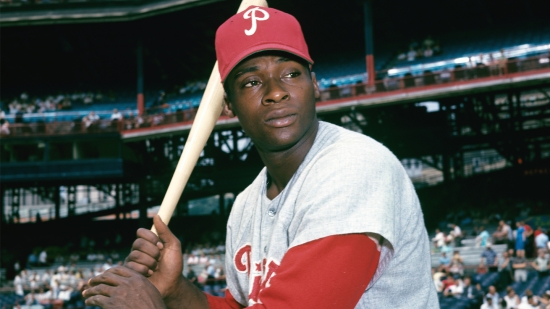Index
Negro Leagues Candidates
During his 14-year Negro Leagues career, Josh Gibson posted an OPS+ of 200 or better eight times, led the National Negro League in that category seven times, and posted a career OPS+ of 214. (OPS+ is the sum of on-base percentage and slugging percentage adjusted to the hitter's league and home ballpark and indexed to 100, which is considered to be league-average.) In 1972, Gibson became the second-ever Negro Leagues player inducted into the Hall of Fame.
And when, nearly a half-century after his induction, Gibson's league, along with six other Negro Leagues, officially joined the Major Leagues, he surpassed Ty Cobb in career batting average, further swelling the mythology that Gibson is indisputably one of the greatest hitters who ever lived. In 602 games and 2526 plate appearances that produced 808 hits, Gibson batted .373. In 3034 games and 13,103 plate appearances that produced 4189 hits, Cobb batted .366. And therein lies the rub.
Even within exclusively black baseball, sample sizes are suspect because of talent dispersion, while in comparison to white baseball those sample sizes are not comparable at all because, in addition to huge variations caused by talent dispersion, they are simply too small. Yet because the Negro Leagues are now considered part of Major Leagues, incorporating their statistics can result in dramatic disparities.
MLB had encountered this situation before when, in 1969, it added four defunct leagues, three from the 19th century, two of which lasted for just one year, while the 20th-century Federal League lasted two. The American Association lasted a decade as, before it disbanded in 1891, it ultimately fed eight of its teams to the National Leagues, four of which still exist today. No player who spent the majority of his career in the AA has yet been elected to the Hall of Fame. Of course, every player was white and could, and did, transit to and from the Majors.
As with the Negro Leagues players, these players had their statistics rolled into those of the existing Major Leagues, but apart from AA numbers, which reflect only pre-modern baseball (prior to 1901), they are negligible. No so for Negro Leagues statistics, which for nearly three decades formed the only picture of these players, and while they reflect small sample sizes, they can make significant impacts when thrust among MLB's existing statistical pool.
For example, with the inclusion of Negro Leagues players, the number of hitters who have hit .400 or better in a single season has doubled—sometimes stupendously so. According to Baseball Reference's listing of top single-season batting averages, Lyman Bostock, Sr., had the third-highest batting average ever, .466, in 1941 when in 23 games and 84 plate appearances he tapped out 34 hits (just seven of them for extra bases) to reach that rarefied plateau.
Bostock's paltry 84 plate appearances is only the most extreme example (although .400 hitter Jesse Douglas had just one more in 1944), but it is representative as just 11 of 30 batters who hit .400 in the Negro Leagues ever had more than 300 plate appearances, with Heavy Johnson's 429 mark in 1923 the only time that number topped 400.
As the sabermetric boom swelled, it became fashionable to denigrate batting average as "overrated" as opposed to on-base percentage (conveniently forgetting that hits, the numerator in the batting average quotient, are usually the largest component of OBP), but it can be a key indicator of quality of play, particularly for hitters questing to hit .400.
The last hitter to do so, Ted Williams, hit .406 in 1941, more than 80 years ago; batting .401 in 1930, Bill Terry became the last National League hitter to do so, nearly a century ago. Prior to the inclusion of the Negro Leagues, no African-American player had ever hit .400. Tony Gwynn came closest when he hit .394 in 1994—a strike-shortened season that ended in early August, nearly two months shy of a regular season, and like previous efforts by George Brett and Rod Carew to reach that chimerical plateau, Gwynn's effort was likely to fail as well.
Talent compression is of course the primary reason for failure as pitching and defense improve continually thanks to an expanding talent pool that means more excellent players supplant the average and mediocre ones, but what has always challenged hitters in any era is season longevity—maintaining superlative hitting over a six-month season is a monumental task.
The inclusion of the 30 Negro Leagues hitters who batted .400 or better in a season is patently ridiculous, but it does make salient the impact of both talent dispersion and small sample sizes. I look at the inclusion of Negro Leagues statistics in the same way I regard pre-modern baseball statistics: They are a part of baseball's historical record that illuminate their times, but I can't take them seriously. However, they are useful for underlining how expansion of the talent pool increases talent compression while it flattens variance curves. In an integrated era, Rogers Hornsby would not have averaged .402 across five consecutive seasons, and by the same token, Josh Gibson would not have a career OPS+ of 214.
Again, the historical record bears this out. Transitioning African-American players who played more than one or two seasons in the Negro Leagues including Larry Doby and especially Roy Campanella, who led the Negro National League in hitting with a .388 average in 1944, all normalized once they began playing in the gradually integrating Major Leagues.
Lessons in talent dispersion and extreme variances inform the discussion as we turn to the two Negro Leagues candidates on the Classic Era ballot, John Donaldson and Vic Harris, as does the question posed previously: Are there any worthy Hall of Fame candidates in Negro Leagues baseball left to induct?
Currently, 28 men identified as players in the Negro Leagues are in the Hall, which might seem like a small number in comparison to the 246 identified as players in the Major Leagues, which also includes Negro Leaguers inducted for playing in the American or National Leagues. However, those 28 are in proportion to both the number of African-Americans in the overall population of the United States from 1920 to 1950 and the total number, 274, of all players in the Hall of Fame; in both cases, the proportion is roughly ten percent.
And not to get too technical, but John Donaldson played just five years in the Negro Leagues, from 1920 to 1925, primarily as a center fielder with a 106 OPS+ although he also pitched in 22 games over two seasons with an 88 ERA+. (ERA+ is a pitcher's earned run average league- and park-adjusted and indexed to 100, with 100 indicating league-average.)
Born in 1891, John Donaldson was instrumental in the development of black baseball from its early years in the 20th century both on and off the field including his barnstorming activities. When Major League Baseball integrated, Donaldson became MLB's first full-time African-American scout and had scouted Ernie Banks and Willie Mays.
Black baseball pioneer John Donald played just five years in the Negro Leagues.
John Donaldson garnered eight votes out of 16 ballots cast by the short-lived Early Days Era Committee in 2022, and he may fare better this time although both his narrative and his statistical record are fragmented and thus not definitive. Why that is goes to the legacy of Jim Crow that treated African-Americans as second-class citizens not worthy of proper recognition, but it would be gratuitous overcompensation to elect Donaldson based on what is believed to be what he might have accomplished without adequate documentation to verify it.
As a player who played, and managed, for virtually all of the Negro Leagues' existence, Vic Harris may be the Joe Torre of black baseball, an excellent-hitting left fielder who posted a .303/370/.428/.798 slash line, good for a 112 OPS+, and a winning manager for the vaunted Homestead Grays whose teams won 547 games against just 278 losses for a .663 win percentage.
As a manager, Harris steered the Grays to seven pennants and, in his final year, a World Series title; in addition, the six-time all-star won a World Series championship as a player with the Grays in 1943. Harris joined Donaldson on the 2022 Early Days Era Committee, falling two votes shy of election.
The black Joe Torre? Vic Harris may see Hall honors this year.
"Vicious Vic," so-called for his hard-nosed demeanor, may well punch his way into Cooperstown this time based on an excellent if not superlative playing career and a truly sterling managerial career, given the strictures of Negro Leagues baseball, that makes him the Joe Torre of black baseball.




Comments powered by CComment